The 6 Key Objectives of the Global Digital Document Exchange Program
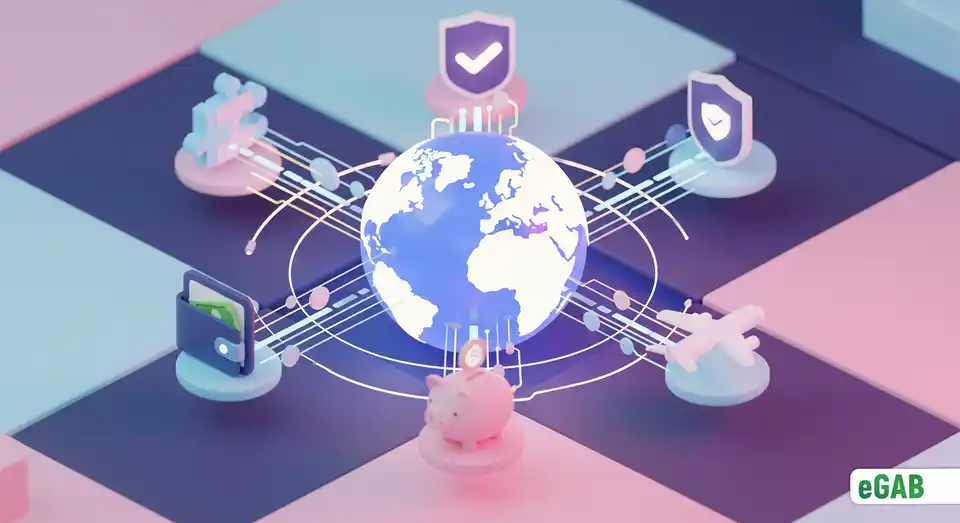
 Author:
Artem Grigoriev
Author:
Artem Grigoriev
- Creation of Unified Standards
- Ensuring Global Recognition and Trust
- Enhancing Security and Data Protection
- Simplifying Processes for All Participants
- Reducing Costs and Increasing Efficiency
- Promoting International Academic and Professional Mobility
- Summary: Forging a Future of Global Trust and Mobility for Your Achievements
Have you ever felt like your degree is stuck in one country? You worked hard for your qualifications. But the moment you want to study or work abroad? Proving they’re real becomes a massive headache, highlighting the core problems of paper and digital documents in today's systems. You're stuck dealing with endless paperwork and obsolete systems that simply don't trust each other. That’s exactly where The Global Digital Credentials Management Program comes in. We built it as a direct answer to this very challenge. The program's core definition, principles, and purpose are all about creating a single, universal framework. We designed it so that your credentials are secure, trusted, and instantly verifiable . This article will walk you through its six key objectives. We'll show you how it establishes a universal standard and paves a simpler path for you to take your talents anywhere in the world.
📘 This post is part of our comprehensive guide to "The Global Digital Credentials Management Program". Explore it to find answers to all your questions ;)
Creation of Unified Standards
For any global system to actually work, everyone needs to speak the same language. Imagine the chaos of trying to have a conversation where every person is using a different dictionary. That's precisely why a core mission of The Global Digital Credentials Management Program is to create and push for unified standards , which serve as that common language for the entire life of a digital document.
This work isn't just about agreeing on a few details; it's about building a complete rulebook based on twelve foundational principles that everyone follows. This process starts with the format of the documents themselves , making sure they're structured on proven, open models like the W3C Verifiable Credentials . Think of this as the universal blueprint for how a digital diploma or certificate should be built, no matter who issues it.
But the blueprint is only half the story. We also need a shared dictionary for the information inside the document. By using consistent metadata schemas , like the widely-used Schema.org for educational credentials , we guarantee universal data understanding. This means that when a system sees a field for "issuing institution" or "date of completion," it knows exactly what it means, whether that credential came from a university in Brazil or a tech company in South Korea. Of course, we wrap all of this in powerful security protocols , using strong cryptography to ensure every document is tamper-proof and that its verification is a standard, trusted process.
When you put all these pieces together, you get the magic ingredient: true interoperability . This is the key that unlocks the entire system. It guarantees that the different secure platforms used by universities, employers, and governments can all communicate with and understand each other seamlessly. More importantly, it directly prevents a problem known as vendor lock-in , where your valuable credentials get trapped inside a single company's technology. With unified standards, you have the freedom to manage your achievements on your own terms, confident that they'll be recognized and accepted anywhere, on any compliant platform, both now and in the future.
Think of it like this: Unified standards turn your digital credentials into a universal passport. Instead of needing a different "visa" (or app) for every country (or employer), you have one document that's instantly understood and accepted everywhere. This ensures your achievements are future-proof and free from being stuck in one company's system.
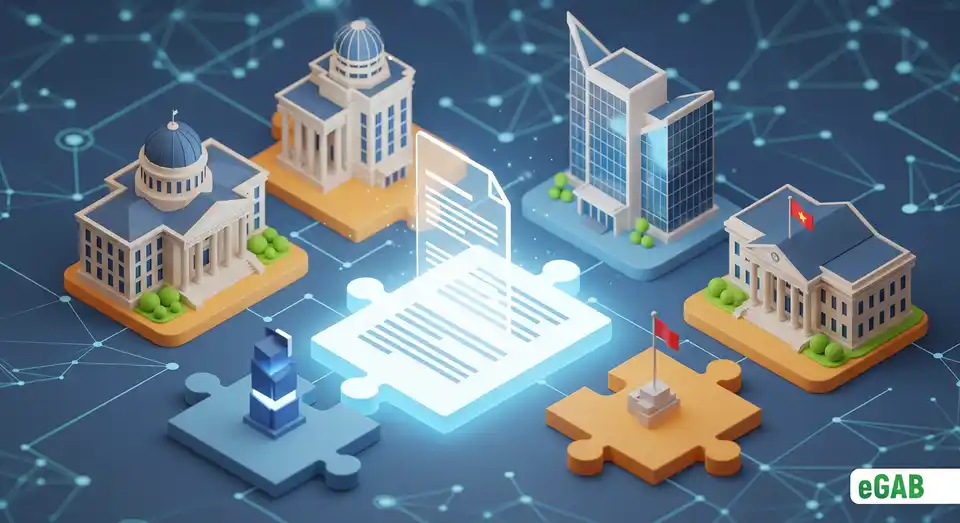
Ensuring Global Recognition and Trust
A digital document is only as valuable as the trust people have in it. After all, what good is a digital diploma if an employer overseas can't be sure it's real? This is precisely why the mission of The Global Digital Credentials Management Program is so vital. It aims to build an ecosystem for your credentials where they are unconditionally recognized and trusted by everyone, everywhere-including employers, universities, and even governments.
So, how do you build that kind of universal belief in a digital file? The answer is to create clear rules and frameworks that everyone agrees to follow. You see, secure technology by itself isn't enough. To make this trust possible, you also need a system of governance. This is where a list of accredited issuers and verifiers (Trust Registries) becomes absolutely essential. You can think of it as a global “approved” list. Before a university can issue a verified digital credential, it first has to be on this trusted list. This one simple step stops unverified organizations from flooding the system with fakes, which in turn protects the value of your legitimate achievements.
We can see this in action with initiatives like the European Blockchain Services Infrastructure (EBSI) , which are already showing us the way. By creating a well-defined framework , the system clarifies everything. It defines the roles, responsibilities, and even liability for every single participant, which are key parts of the six core components of the GDCP ecosystem. This creates a predictable and reliable environment-a space where a university in one country and an employer in another can interact with total confidence. Why? Because they know they're operating under the exact same rules. It's this shared trust that transforms a simple digital document, making it a globally respected and valuable asset.
To understand why this is so important, think of it this way: A simple PDF of your diploma is a lot like a photocopy. While it looks right, it's incredibly easy to fake. In contrast, a credential from this trusted framework is different. It’s more like a government-issued passport, as it's backed by a global system of verification-a system that everyone recognizes and respects. Because of this, it carries immediate and undeniable authority.
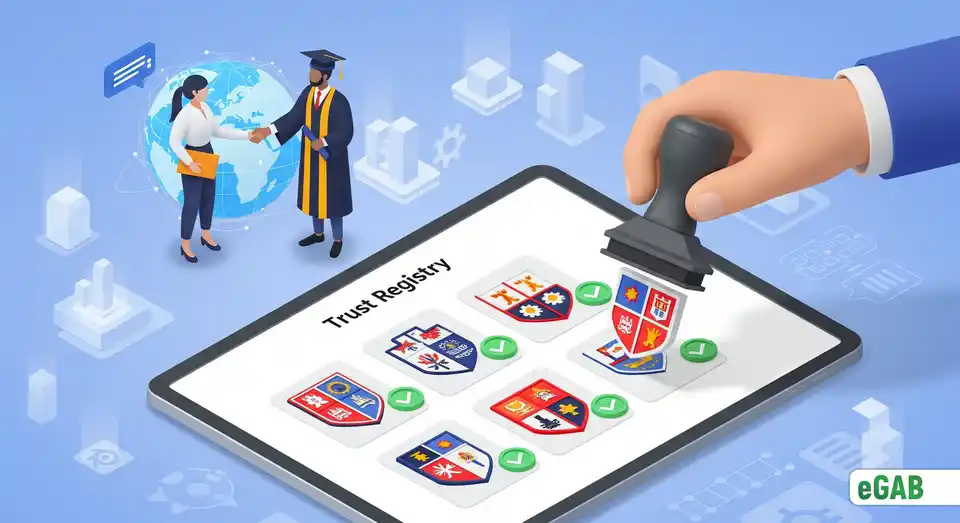
Enhancing Security and Data Protection
In a world where digital information is constantly under threat, how can you be absolutely certain an online document is the real deal? Answering this question is at the very heart of building a digital ecosystem you can actually trust. Our main goal here is to lock down educational documents and personal data, guaranteeing their immutability (meaning they can’t be changed) , authenticity (they’re genuine) , and security . In short, this process makes them completely safe from prying eyes, forgery, or any unauthorized edits.
So, how do we build this digital fortress? It’s not just about adding a password; it’s about using a combination of cutting-edge technologies that all work together perfectly.
First up is Blockchain , the technology powering systems like the Global Academic Blockchain (eGAB). While you might know this tech from cryptocurrencies, its true strength is its power to create a transparent and unchangeable record. Think of it like a digital stone tablet: once we etch a credential onto it, it can't be altered or erased-at least not without everyone noticing. This creates a permanent, verifiable history that anyone can check, which instantly shuts down any chance of forgery.
But what about your privacy? Let’s be real, you don’t want your personal information just sitting out in the open. That's where privacy-preserving techniques come in. A key tool we use here is something called a Zero-Knowledge Proof. It might sound complicated, but the idea is pretty simple. It lets you prove something is true without revealing the sensitive information behind it. It’s like proving you’re old enough to get into a venue without ever showing your actual birthdate; the system confirms you’re eligible, while your private data stays completely private.
Of course, all of this technology runs under strict rules. All our solutions must fully comply with tough data protection laws, like GDPR in Europe. This isn't just a box-ticking exercise for us; it’s a core commitment to integrating "Privacy by Design and by Default" principles. This means we built the system from the ground up to protect you. It’s engineered to collect the absolute minimum data needed and always operates based on your explicit consent. You are always in control.
What makes the system so powerful is this two-part approach. On one hand, blockchain gives you radical transparency, which makes your credentials easy to verify. On the other, privacy-preserving tech ensures something critical: while your achievements are verifiable, your personal data remains securely under your control. You get the best of both worlds-undeniable proof and complete privacy.
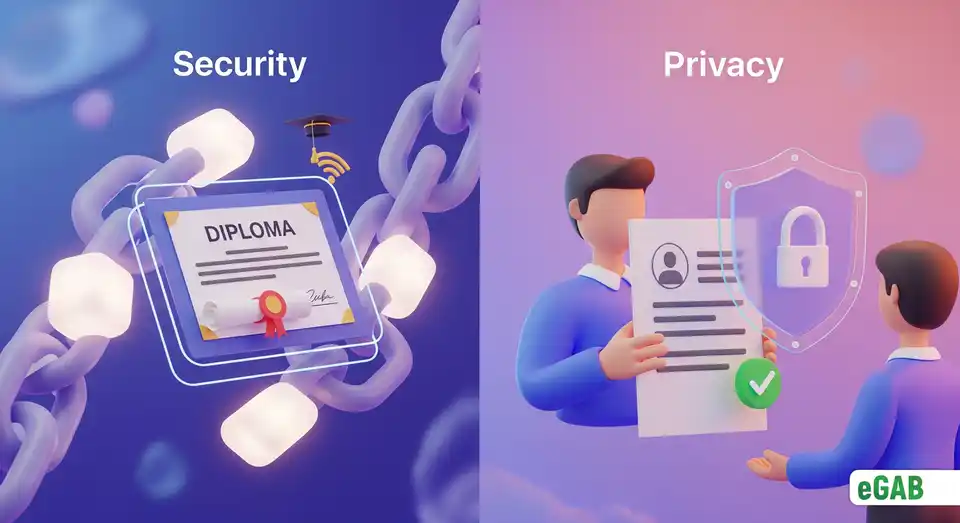
Simplifying Processes for All Participants
Technology should make your life easier, not more complicated. That simple truth is at the heart of this entire program. We designed it for maximum automation and simplification from top to bottom, with one goal in mind: getting rid of the frustrating bottlenecks that slow everyone down. This applies to you whether you're issuing, storing, or simply trying to verify important documents.
So, how does it actually make things simpler? The solution is elegant: we moved everything into secure, user-controlled digital wallets . This means you no longer have to depend on slow, manual processes. Just think about the endless emails and phone calls it used to take just to get a transcript sent. Now, the power is in the hands of the individual. This fundamental shift is what slashes bureaucracy and those agonizing waits. For example, a verification that used to take weeks of waiting can now be completed in seconds.
Make no mistake, this isn't just a minor tweak; it's a complete game-changer. It makes it clear who benefits from digital credentials-from university registrars and HR teams to the students and professionals themselves. University registrars can finally breathe easier, while HR departments can onboard new talent far more quickly. As an individual, you no longer have to jump through hoops just to prove your qualifications. This powerful simplicity also extends to traditionally messy tasks, like updating or revoking credentials. What happens when a professional license needs to be renewed? Or a certificate needs to be updated with new skills? The system handles it all seamlessly, without the hassle of creating a mountain of paperwork.
This focus on simplicity isn't just about saving you time. More importantly, it's about removing the needless friction from your career and educational journey. Because your achievements are now instantly accessible and verifiable, you can seize opportunities much faster than before. You can confidently apply for a dream job across the globe or enroll in a new program without any frustrating delays. Ultimately, it’s a system that puts you firmly in control.
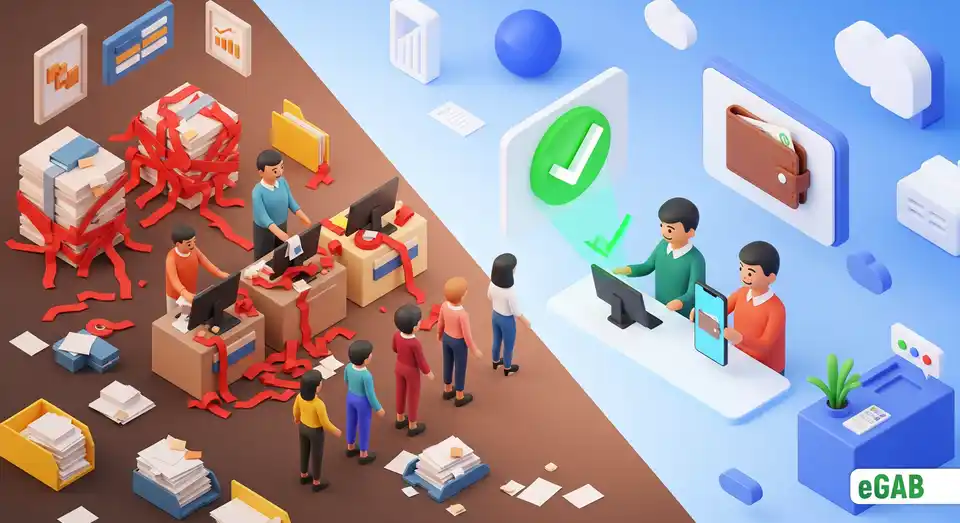
Reducing Costs and Increasing Efficiency
Have you ever stopped to think about the real cost of a single piece of paper? With traditional credentials, the price goes far beyond just printing a diploma. You also have to account for the specialized ink and high-quality paper. Then, you have the countless administrative hours your team spends carefully processing each document. After that comes the cost of envelopes and the secure postage needed to mail it. Now, imagine multiplying that one cost by thousands of students, year after year. You'll quickly see the numbers add up incredibly fast.
That's precisely where a unified digital approach makes a massive, welcome shift. This program is specifically designed to dramatically decrease institutional expenses . It achieves this by moving your entire workflow into a secure, digital space. By getting rid of physical printing, tons of cumbersome administration, and pricey mailings, you're doing much more than just saving a few dollars. You are fundamentally changing how you manage your valuable resources. This newfound financial efficiency doesn't just help your institution's budget. It also saves employers a huge amount of time and money, because they can skip the long, manual verification processes they once had to do.
When you free up that capital and personnel, something truly powerful happens. This change allows you to put those precious resources back where they truly belong. You can then better advance your core mission: teaching, pioneering innovative research, and providing outstanding student support. For a moment, just imagine the possibilities. Think of getting better lab equipment or securing more funding for critical research grants. You could have vastly enhanced student services. This is all possible by ditching an outdated and clunky paper-based system.
A compelling report from AACRAO makes this point perfectly. Moving to digital credentials is far more than a minor upgrade; it’s a complete transformation with a real, positive impact. The overall economic impact is significant , especially when you consider the valuable long-term benefits. These include things like reduced fraud and much smoother administrative tasks. Ultimately, it’s about building a smarter, leaner, and more effective educational ecosystem. And that's something that benefits absolutely everyone involved.
Shifting to a digital credential system isn't just about saving paper. It means strategically reallocating your money and people away from tedious administrative tasks. Instead, you can focus their energy on high-value educational initiatives. This key shift empowers universities and colleges to invest more deeply in what truly matters: the quality of education and the success of their students.
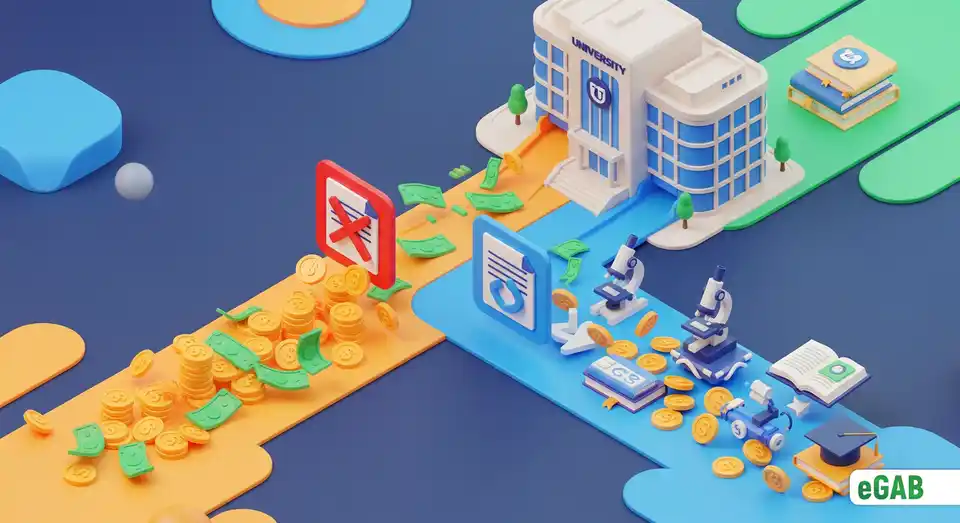
Promoting International Academic and Professional Mobility
Have you ever dreamed of studying or working in another country, only to be stopped by a frustrating wall of paperwork? Those bureaucratic delays are a common headache. In fact, getting your qualifications recognized is one of the biggest hurdles to going global. That's the exact challenge a universal standard for digital documents is built to solve.
The main goal is simple: to eliminate barriers for students, researchers, and professionals who are eager to take their talents abroad. This program creates a common language for academic and professional credentials-a system that simplifies and dramatically speeds up how your qualifications get recognized. Just imagine it. Instead of waiting weeks or even months for a foreign institution to verify your degree, the process can happen in moments. This forward-thinking approach also directly supports the existing international agreements and frameworks designed to make global mobility easier for everyone.
This innovation sparks a powerful effect known as global talent circulation -the free movement of skills and expertise across borders. When skills and expertise can move freely, everyone benefits. It empowers countries to attract top minds and helps individuals find the best possible opportunities, no matter where they are. This isn't just a theory; it's the driving force behind vital initiatives. A great example of this in action is UNESCO's Qualifications Passport for Refugees and Vulnerable Migrants . It provides a real, tangible way for displaced individuals to have their skills formally recognized, helping them build new lives.
Ultimately, a globally trusted system for credentials does so much more. It's not just about helping one person get a job or enroll in a university; it actively fosters a new era of cross-border educational collaborations and research partnerships. This, in turn, makes our entire global learning ecosystem more dynamic and deeply interconnected.
Think of it this way: such a system gives your qualifications their own passport. It ensures that the degree you worked so hard to earn is instantly understood and trusted anywhere in the world, not just in your home country. Your skills become truly portable. This opens doors to international opportunities you might have previously thought were out of reach.
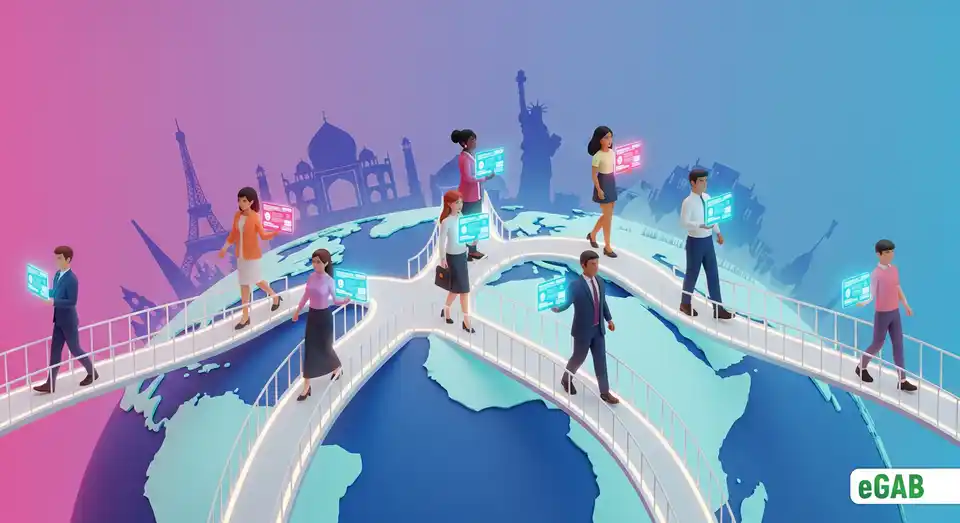
Summary: Forging a Future of Global Trust and Mobility for Your Achievements
So, what’s the bottom line? The Global Digital Credentials Management Program isn't just a minor upgrade. It’s a complete reimagining of what a qualification means in our interconnected world. To fix the biggest frustrations we face with credentials today, the program masterfully weaves together six core objectives.
It all starts by creating unified standards . You can think of this as a common language that ensures your digital degree is understood everywhere, which also stops it from getting locked into a single system. Building on that strong foundation, the program meticulously creates unshakeable global trust . We accomplish this through clear governance and accredited issuers, which transforms your credential from a simple file into a universally respected asset-much like a government-issued passport.
Of course, none of this would matter without ironclad security and data protection . The system uses advanced technologies like blockchain to create tamper-proof records, and it also uses privacy-preserving techniques. This means you get the best of both worlds: radical transparency for verification, and you keep complete control over your personal data. This powerful tech backbone allows for radically simplified processes , putting you in the driver's seat through a digital wallet while slashing verification times from weeks to mere seconds. This impressive efficiency doesn't just save you time; it also slashes costs for institutions. In turn, this frees up vital resources they can then reinvest into the core mission of education and research.
Ultimately, these pillars all work together in harmony. They achieve the final, and most critical, goal: promoting true international mobility . This groundbreaking initiative tears down bureaucratic barriers and paves the way for the future of digital credentials, where your skills and hard-earned achievements are genuinely portable. This change opens doors for you to academic and professional opportunities anywhere on the globe.
➡️ Where to from here? You've learned the program's goals. The next logical step is to see the technical framework that makes achieving them possible. Discover the 6 core components that form the GDCP ecosystem.
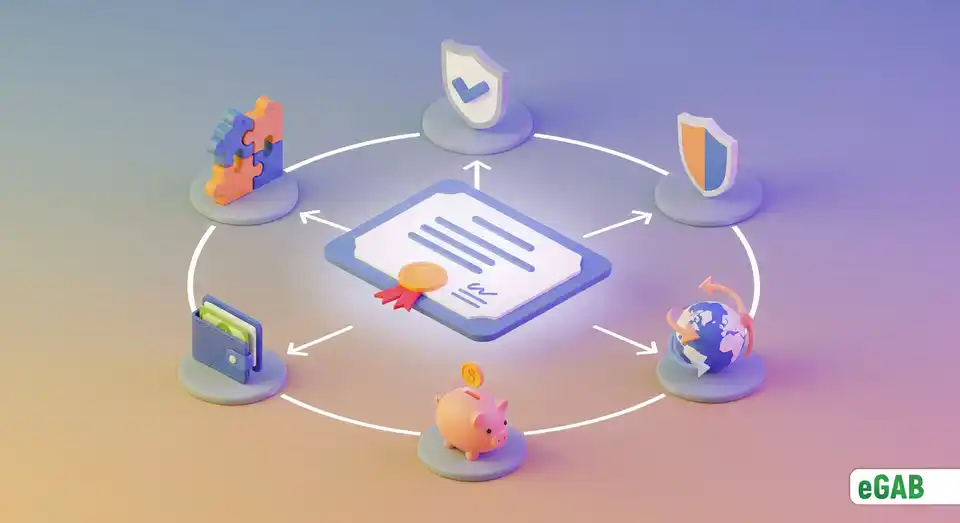
The GDCP: Definition, Principles, and Purpose
Case Study: How the eGAB Ecosystem Implements the GDCP Standard
The 6 Core Components of the GDCP Ecosystem
The Future of Digital Credentials: AI, Micro-Credentials, and the GDCP
Who Benefits from Digital Credentials? The GDCP Advantage
